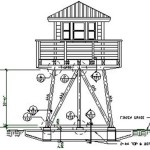House on Mango Street Introduction Lesson Plan: A Comprehensive Guide
Sandra Cisneros's *The House on Mango Street* is a seminal work in American literature often taught in middle and high school classrooms. Its fragmented, vignette-style narrative offers a unique perspective on growing up, cultural identity, and the search for belonging. A well-designed introductory lesson is crucial for setting the stage for a meaningful and engaging exploration of the text. This article will provide a comprehensive guide to creating an effective *House on Mango Street* introduction lesson plan, focusing on key elements that will enhance student understanding and appreciation of the novel.
Establishing Context: Cisneros's Life and the Socio-Political Landscape
Before diving into the text itself, it is essential to establish context. Begin by introducing Sandra Cisneros, the author. A brief biography highlighting her Chicana heritage, her experiences growing up in Chicago, and her struggles with identity and finding her voice is highly beneficial. Explain how her personal experiences heavily influenced *The House on Mango Street*. This can be achieved through short video clips, excerpts from interviews, or biographies tailored for younger audiences. Focusing on her journey as a writer, particularly the challenges she faced in a predominantly white, male-dominated literary landscape, can resonate with students and provide a deeper appreciation for her work.
Furthermore, it is imperative to contextualize the novel within the socio-political landscape of the time it was written. *The House on Mango Street* was published in 1984, a period marked by economic disparities, social injustices, and cultural clashes. Discuss the themes of poverty, immigration, and discrimination faced by many Latino communities in the United States during this era. Explaining the historical and social context in which the novel was set helps students understand the challenges Esperanza Cordero and her community confront throughout the narrative. This can be achieved by providing background information on urban poverty, specifically focusing on the conditions in predominantly Latino neighborhoods.
Another crucial aspect of establishing context involves defining key terms and concepts, such as "Chicana/o," "machismo," and "feminism," in a way that is accessible to students. These terms are central to understanding the novel's themes and characters. Offer clear definitions and examples to avoid misconceptions and ensure that students are equipped to analyze the text critically. Avoiding overly academic language in favor of simpler, more relatable explanations is often more effective. For instance, when defining "machismo," illustrate it with relatable examples from popular culture or current events, discussing the societal pressures placed on men and the potential negative consequences.
Exploring Themes: Identity, Belonging, and the Power of Voice
Introducing the major themes of *The House on Mango Street* is vital for guiding student reading and analysis. The novel explores complex and universal themes such as identity formation, the search for belonging, the power of voice, and the impact of gender roles and expectations. Begin by brainstorming with students about their own experiences with these themes, asking them to consider what "identity" means to them or when they have felt a strong sense of belonging (or a lack thereof). This personal connection can make the themes more relatable and engaging. Focus on open-ended questions that encourage diverse perspectives and promote class discussions.
Specifically, address the theme of identity. Explain how Esperanza's journey is a search for self-definition, a process of understanding who she is and who she wants to become. Discuss the various influences that shape her identity, including her family, her community, and her experiences as a young Latina girl growing up in a marginalized neighborhood. Emphasize that identity is not fixed but rather a fluid and evolving concept. This can be effectively illustrated through examples from students’ own lives or from other literary works they have encountered.
The theme of belonging is equally critical. Explore how Esperanza feels like an outsider, both within her own community and in the larger society. Analyze the various factors that contribute to her sense of alienation, such as her economic status, her gender, and her aspirations for a different life. Discuss the importance of community and the desire to find a place where one feels accepted and valued. Encourage students to reflect on their own experiences with belonging and exclusion, fostering empathy and understanding.
Furthermore, delve into the significance of voice and storytelling. Explain how Esperanza uses writing as a way to express herself, to make sense of her experiences, and to break free from the constraints of her environment. Discuss the power of language to shape perceptions, challenge stereotypes, and empower individuals. This theme can be connected to the author's own journey as a writer, reinforcing the idea that writing can be a powerful tool for social change. Encourage students to think about how they can use their own voices to make a difference in their communities.
Analyzing Style and Structure: Vignettes and Poetic Language
*The House on Mango Street* is written in a distinctive style characterized by its use of vignettes, short, impressionistic scenes that capture particular moments in Esperanza's life. The non-linear narrative and lyrical language contribute to the novel's unique appeal. Introduce the concept of vignettes and explain how they work together to create a larger narrative. Discuss how each vignette offers a snapshot of Esperanza's experiences and contributes to the overall understanding of her character and her world. Provide examples of vignettes from the text or other literary works to illustrate the concept effectively.
Emphasize the poetic nature of Cisneros's writing. Analyze the use of figurative language, such as metaphors, similes, and imagery, and how these devices contribute to the emotional impact of the novel. Encourage students to identify examples of poetic language in the text and to discuss the effect of these devices on their understanding of the story. Explain how the use of vivid imagery helps the reader to visualize the setting and to connect with Esperanza's emotions. For instance, analyzing the descriptions of Mango Street itself can reveal much about the character's feelings and aspirations.
Discuss the advantages and disadvantages of using a vignette structure. Analyze how this structure allows Cisneros to explore multiple facets of Esperanza's life and the lives of the people around her. Consider how the fragmented nature of the narrative reflects the disjointed experiences of growing up and trying to make sense of the world. At the same time, acknowledge the potential challenges of reading a non-linear narrative and discuss strategies for keeping track of the characters and events. Suggest note-taking techniques or the creation of character webs to help students navigate the novel's structure.
In addition to analyzing the structure of individual vignettes, it's beneficial to examine how the vignettes connect to each other. Certain motifs and symbols recur throughout the novel, creating a sense of cohesion and reinforcing key themes. Discuss the significance of symbols such as shoes, windows, and names, and how these symbols contribute to the overall meaning of the story. Analyze how the repetition of certain images and phrases creates a sense of rhythm and reinforces the emotional impact of the narrative.
Finally, consider incorporating creative writing activities to help students engage with the novel's style. Ask students to write their own vignettes inspired by their own experiences or by the characters and events in *The House on Mango Street*. This exercise can help them to develop their own writing skills and to gain a deeper appreciation for Cisneros's unique voice and style. Encourage students to experiment with figurative language and to use vivid imagery to create a sense of place and emotion in their writing.
By carefully crafting an introductory lesson plan that addresses these key elements, educators can provide students with a solid foundation for understanding and appreciating *The House on Mango Street*. Contextualizing the novel within Cisneros's life and the socio-political landscape, exploring its major themes, and analyzing its unique style and structure will empower students to engage with the text in a meaningful and critical way. This comprehensive approach will enhance their reading experience and foster a deeper understanding of the complex themes and enduring power of Cisneros's masterpiece.
The House On Mango Street Week 1 Of 4

The House On Mango Street Enotes Lesson Plan Com
The House On Mango Street Week 1 Of 4

How To Teach The House On Mango Street Prestwick

The House On Mango Street Only Daughter Lesson Plan 9th Grade Day 47 Enotes Com

The House On Mango Street Enotes Lesson Plan Com

The House On Mango Street Enotes Lesson Plan Com

Ppt House On Mango Street Intro Powerpoint Presentation Free Id 8960090

Intro To House On Mango Street Webquest Miss Donnelly S Daily Apple

The House On Mango Street Summary Of Key Ideas And Review Sandra Cisneros Blinkist








